This Christmas my in-laws gave us membership to Zealandia Ecosanctuary as a present, and it has turned out to be the best gift possible. Mr D and I head off to Zealandia nearly every weekend, to enjoy the scenery, and revel in the birdlife.
(I revel. Mr D looks at it suspiciously and hopes it doesn’t poop on us or attack us).
What’s Zealandia?
Zealandia is an ecosanctuary/park/wildlife sanctuary just 5 minutes drive from the Wellington central business district (and Parliament), and completely surrounded by a predator proof fence.
The fence is designed to keep out ferrets, stoats, rats, cats, possums, weasels, and other invasive pests that destroy plants and kill birds.
All these pests have been cleared out from inside the sanctuary, and many species of native birds, some critically endangered, and some of which went extinct in the Wellington region over a century ago, have been reintroduced.
Zealandia is 225ha (just under a square mile) and just a little smaller than Central Park, but is much wilder and hillier than Central Park.
It features some areas of relatively undisturbed native forest, and other areas where the forest is being restored, as well as two spectacular reservoirs and dams which were built in the 19th century, and served as the water supply for Wellington into the early 1990s.
Most of all, it features birds! (and dino-lizards. I’ll get to those in a bit).
The Birds of Zealandia
Kiwi Pukupuku (Apteryx owenii) Little Spotted Kiwi
There are over 200 Little Spotted Kiwi in Zealandia, but you’ll never see them unless you go on a night tour, because kiwi are nocturnal.
We did the night tour on Valentines Day and saw two kiwi. One came within four inches of my toes (and I just about died of happiness, as did the extremely macho, bloke-y chap with the Eastenders accent who was over from England and on the tour).
I have no photographs though, because I’m not a good enough photographer to take night photos – and sometimes I just want to watch birds, sometimes I want to be behind a camera.
KÄkÄ (Nestor meridionalis)
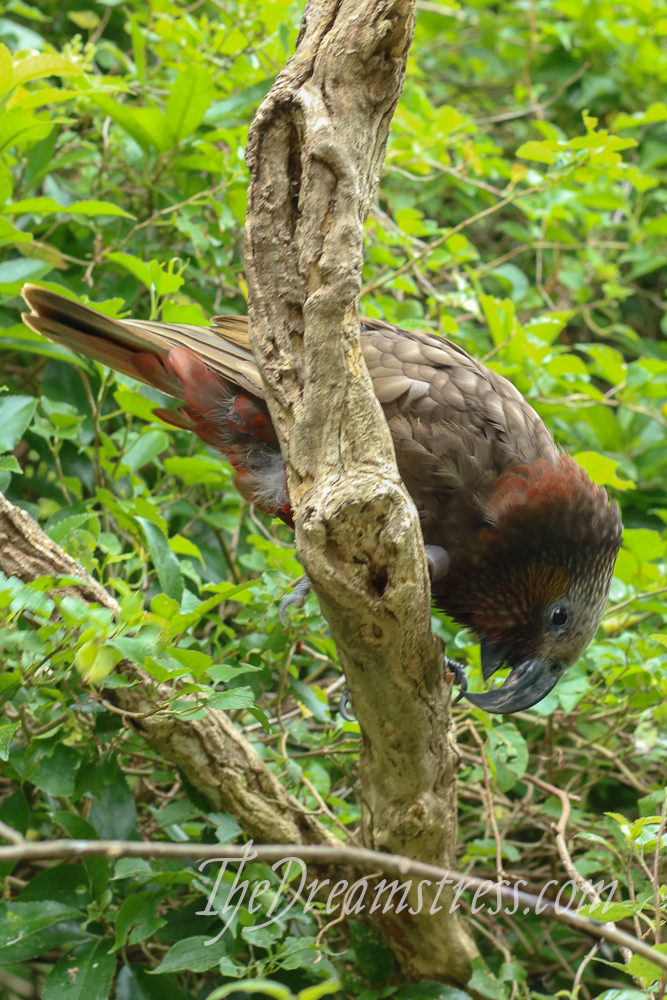
KÄkÄ are a native parrot, and possibly Zealandia’s greatest success story. They were extinct in the Wellington region until the sanctuary brought in a handful of breeding pairs in 2003, and now, 15 years later, there are hundreds of them. They have spread beyond the sanctuary, and you can see flocks of them in many Wellington suburbs (though they are far more at risk outside of it, as rodents will raid their nests). I often hear kÄkÄ calls at work at Toi Whakaari
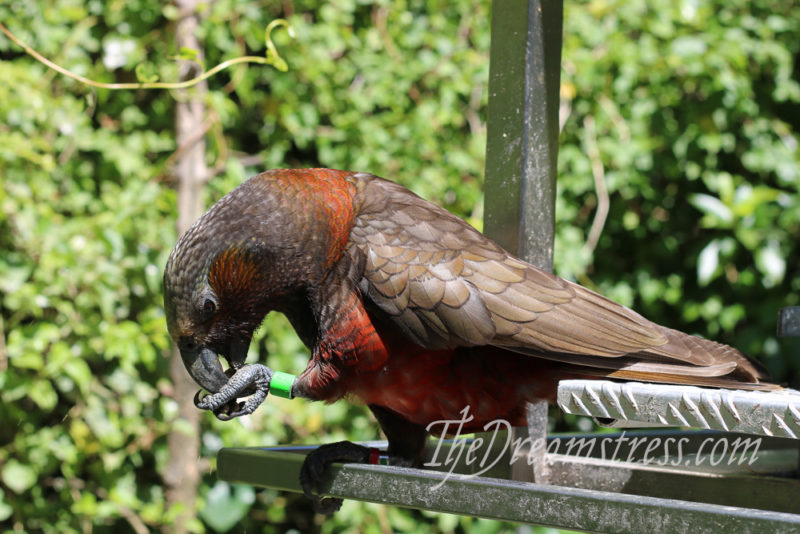
To encourage the kÄkÄ to breed and hang out in the sanctuary, where they are safest (and, let’s face it, to make it easy for visitors to see and enjoy them) there are a number of feeding stations where kÄkÄ can use their brains to access food – one is shown above.
TÅ«i (Prosthemadera novaeseelandiae)
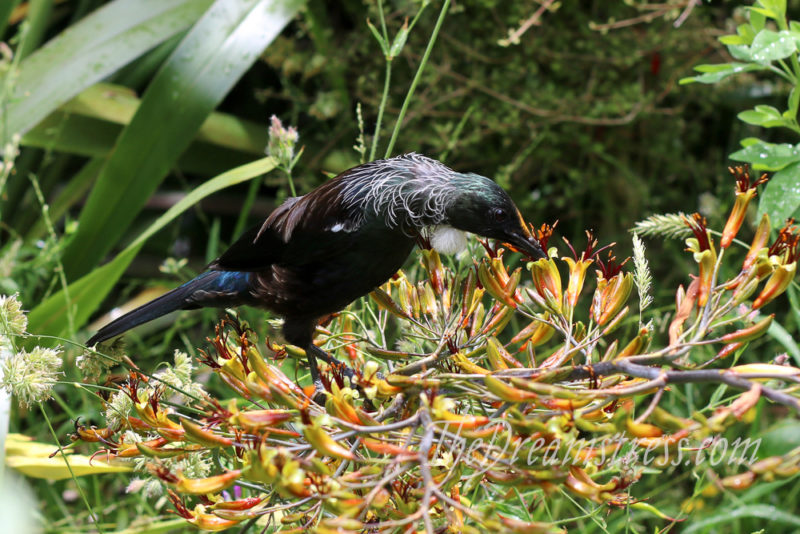
It’s hard to imagine how rare tÅ«i once were in Wellington: conservationists estimate that at one point in the 1990s there were less than 20 breeding pairs. Today they are ubiquitous in every garden, their characteristic liquid song (and fascinating gift for mimicry, quite annoying when they use it to replicate car alarms and mobile phone rings) heard all around the city.
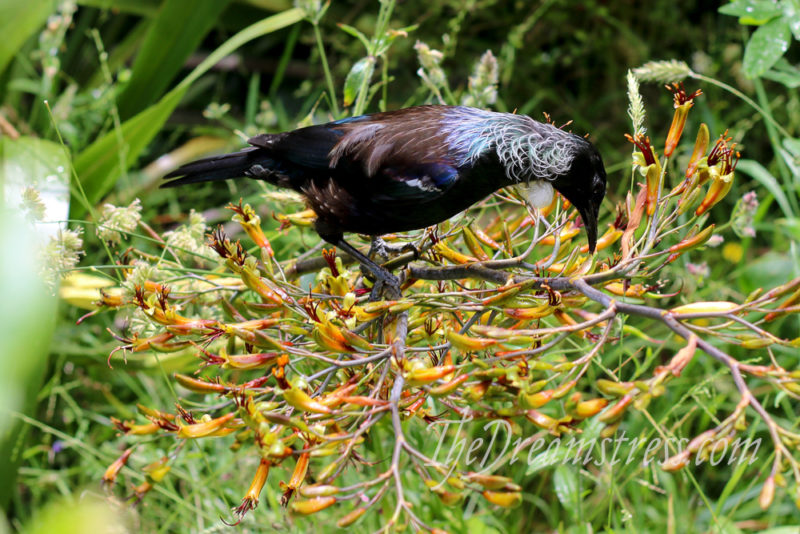
TÅ«i are so common in Wellington that we barely bother to stop and watch them in Zealandia, but they are gorgeous, cunning birds, and this juvenile feeding on NZ flax in the spring was to beautiful not to photograph. Note the splash of yellow pollen on his head in the first photograph, and the white tuft under his chin, that gave tÅ«i their English nickname of ‘parsonbird’
TÄ«eke (Philesturnus rufusater) North Island Saddleback
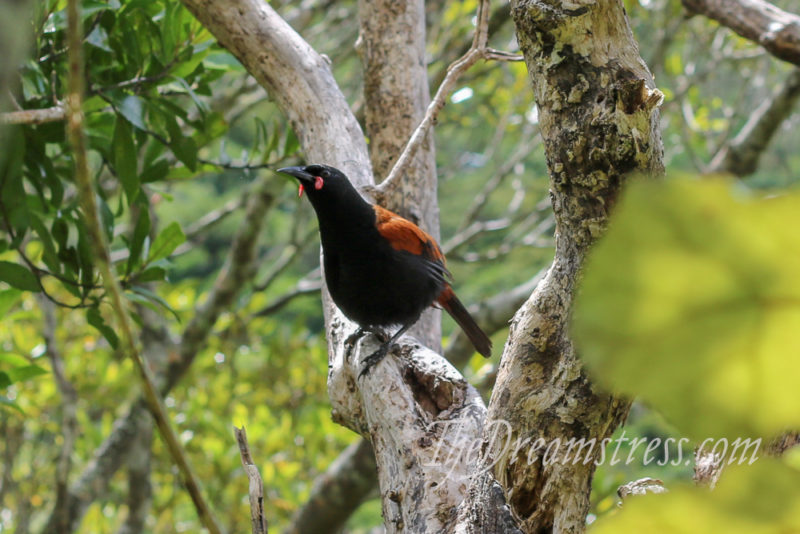
TÄ«eke were once widespread across the North Island, but the arrival of predators and deforestation decimated the population, and by the late 19th century the only surviving birds were ones clinging on on a little offshore island. In 2002 39 tÄ«eke bred from that population were released in Zealand, and there must be hundreds in the sanctuary today – we see half a dozen at every visit.
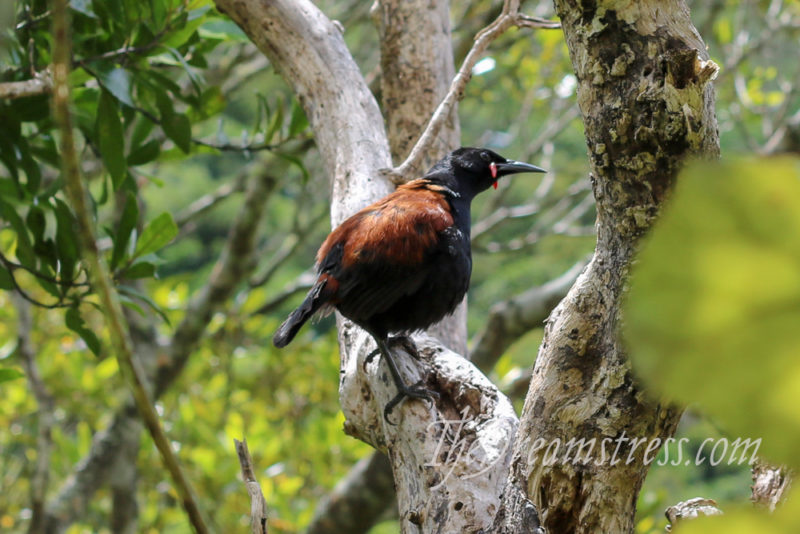
TÄ«eke are insect feeders, and they are easy to spot climbing around on branches probing for yummies, or picking insect eggs off the undersides of leaves. They don’t hesitate to make their presence known, shouting claims to their territory and attempting to scare off intruders with a loud call that sounds a bit like a car engine trying to start.
TÄ«eke get their English name, ‘saddleback’ from the distinctive rusty saddle of feathers on their back and wings.
Hīhī (Notiomystis cincta) Stitchbird
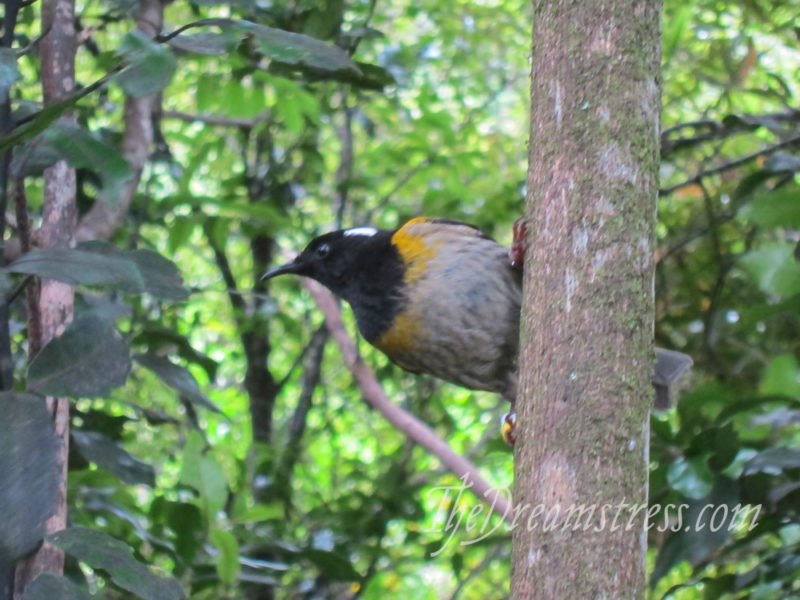
HÄ«hÄ«, in my opinion, have the best name of any bird – both in English and te reo. Their te reo name rhymes with teehee, and their English name references sewing!
Here is a male hīhī feeding in one of the feeders which allows hīhī and bellbirds to enter, but prevents tūi, because they are bully-birds who would chase off the littler nectar feeders. You can hear the distinctive cheep of the hīhī and the call of the tīeke in the background.
Korimako (Anthornis melanura) Bellbird
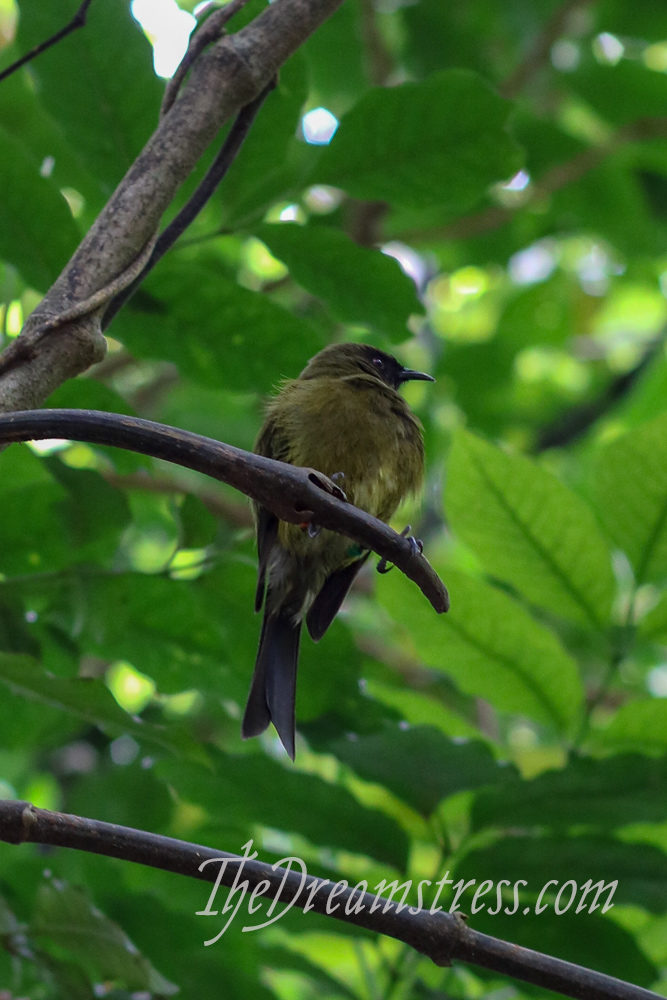
Korimako are hÄ«hÄ«’s primary competitor, being similar in size, and nectar feeders. We’ve seen epic battles involving 2 bellbirds and 5 hÄ«hÄ«, all trying to claim a nectar feeder as their territory, swooping and diving at anyone involved in the fight, irregardless of whether they were the same type of bird or not.
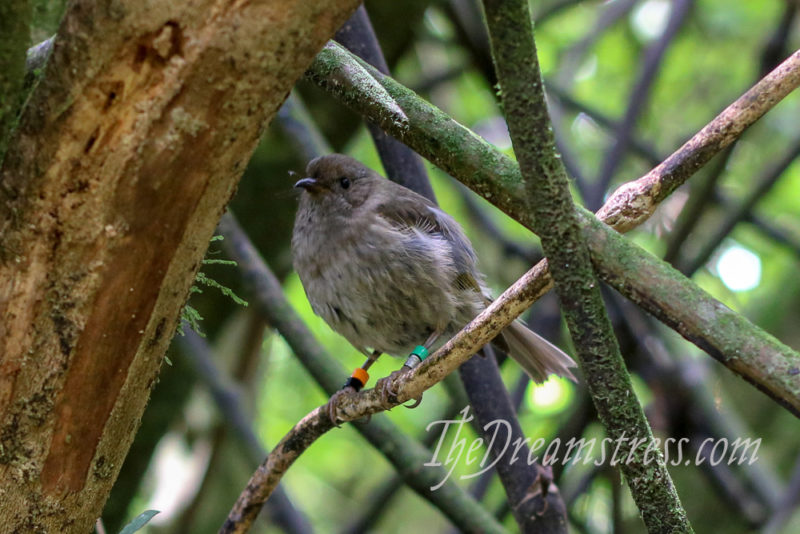
As the name implies, bellbirds have a beautiful, bell-like song. You’re far more likely to hear and notice a bellbird for its gorgeous notes than for its elegant but subdued olive (male) or khaki (femal) feathers.
Unlike the hīhī and tīeke, the bellbird is still found, although in much reduced numbers, across most of New Zealand
Takahē (Porphyrio hochstetteri)
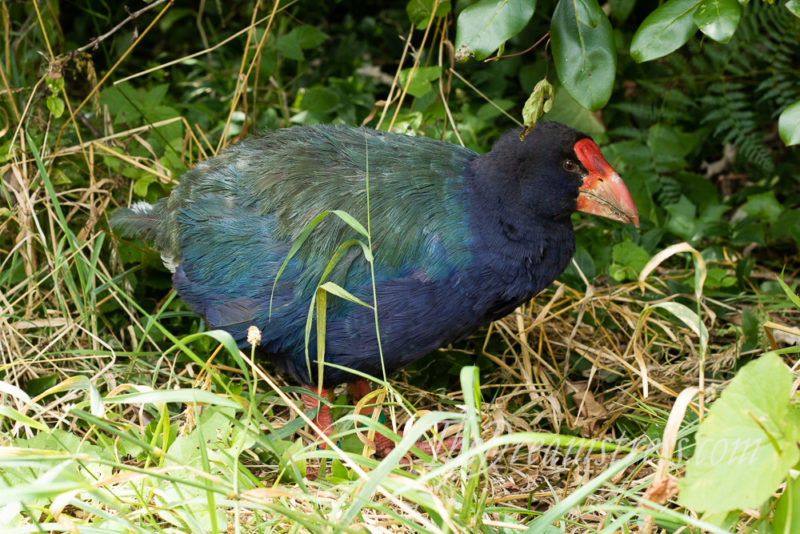
TakahÄ“ are Zealandia’s rarest, most exciting, and (often) easiest birds to see. I’ve blogged about them, and their extremely exciting ‘extinct for 50 years’ story at length, so I won’t do too much more here.
But…this November Orbell and Nio (the takahÄ“ pair) had a baby! They closed off the takahÄ“ area while baby taks was young, for his safety, but I managed to get a few glimpses when s/he was only a tiny ball of black fluff. S/he’s now almost as big as mum and dad, and just beginning to get blue feathers.
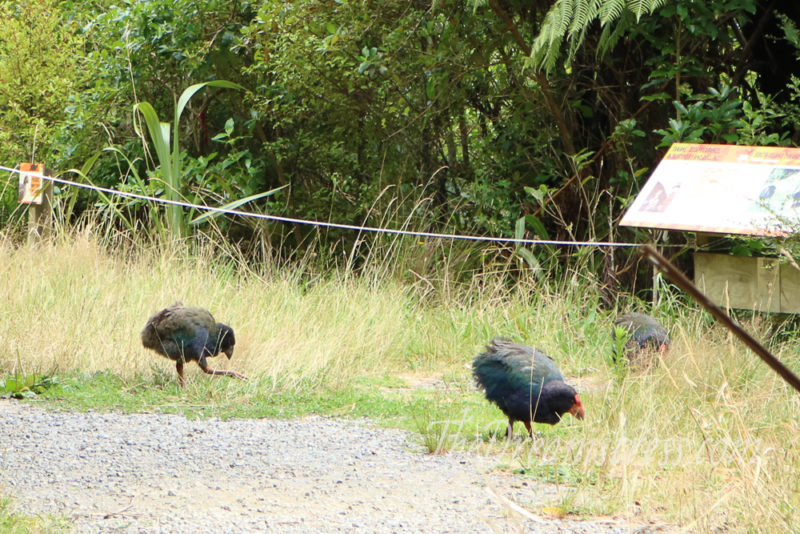
But still SO cute.
Toutouwai (Petroica longipes) North Island Robin
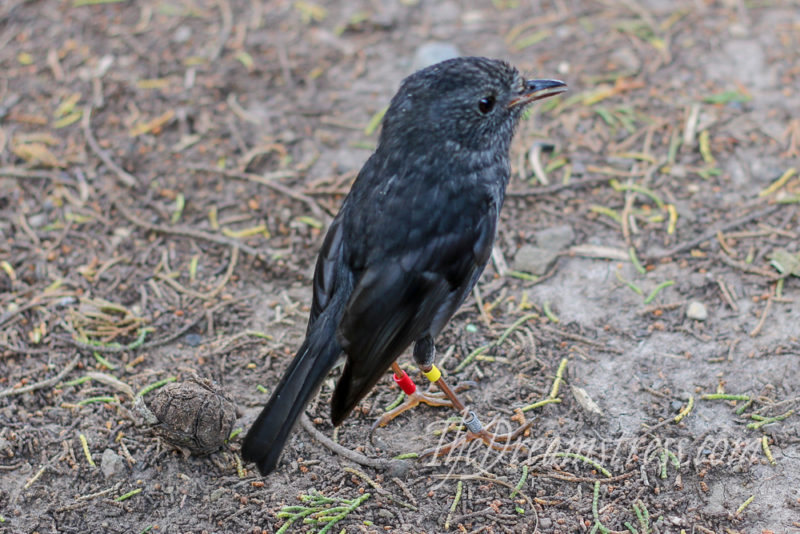
The New Zealand Robins (I showed you the South Island Robin a few years ago) are no relation to the Northern Hemisphere Robin, but they share a friendly, inquisitive personality, hence the name.
Lots of my photographs of toutouwai are on the ground, because the birds are hopping right up to me and checking out my shoes.
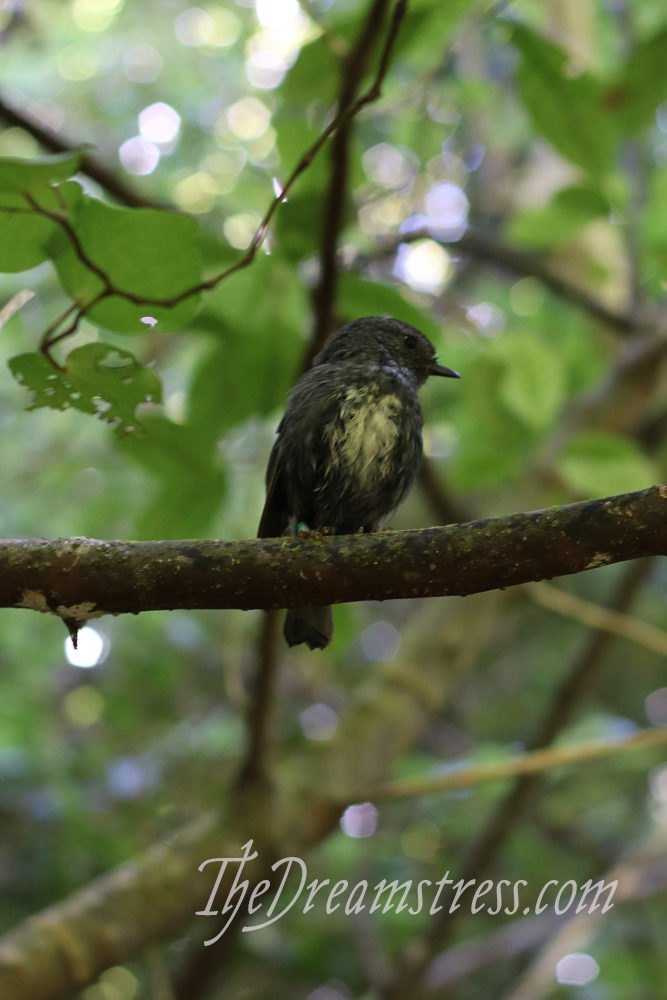
KÄkÄriki (Cyanoramphus novaezelandiae) red-fronted parakeet
KÄkÄriki may be my favourite bird after the takahÄ“ at Zealandia. I haven’t managed to get a good photograph of one, but every time I see them it’s a huge treat. Their chatter is just the sweetest sound in the world.
KÄkÄriki means ‘little parrot’ and also ‘green’. They were once very widespread, but were hunted in the 19th century as pests, because flocks of them descended on farmers grain.
Kererū (Hemiphaga novaeseelandiae) New Zealand pigeon
Kererū made headlines this year because they were voted New Zealand bird of the year, and are also incredibly fat pigeons that crash through the trees like awkward toddlers learning to walk, and literally get drunk on fermented fruits. In open flight, they are actually incredibly graceful.
Here is a mother kererū feeding her baby.
Various non-native birds
The thing about a bird (and the occasional lizard, not-lizard not-dinosaur, and frog) sanctuary, is that you can’t keep out other birds, so various non natives have decided it’s a lovely place to hang out and raise their young.
Like starlings:


And California Quail:
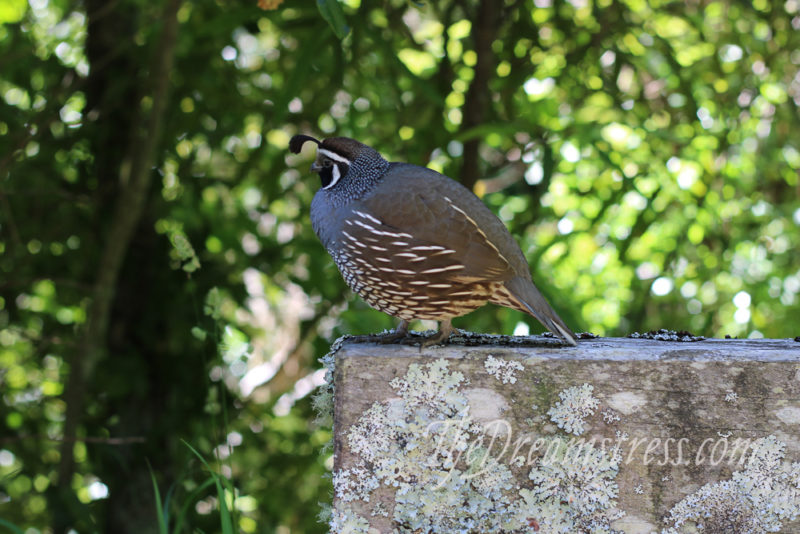
A guide at Zealanida told me the sanctuary doesn’t mind the California Quail too much, because it fills an ecological gap. There was a native New Zealand quail, but it was the first bird to go extinct following European settlement in New Zealand.
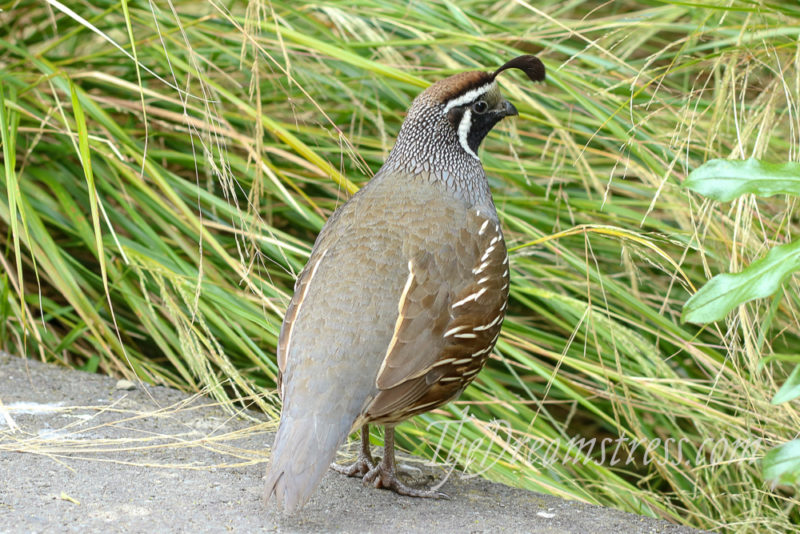
I appreciate knowing this, because now I don’t feel quite so bad about thinking that quail babies are incredibly adorable.
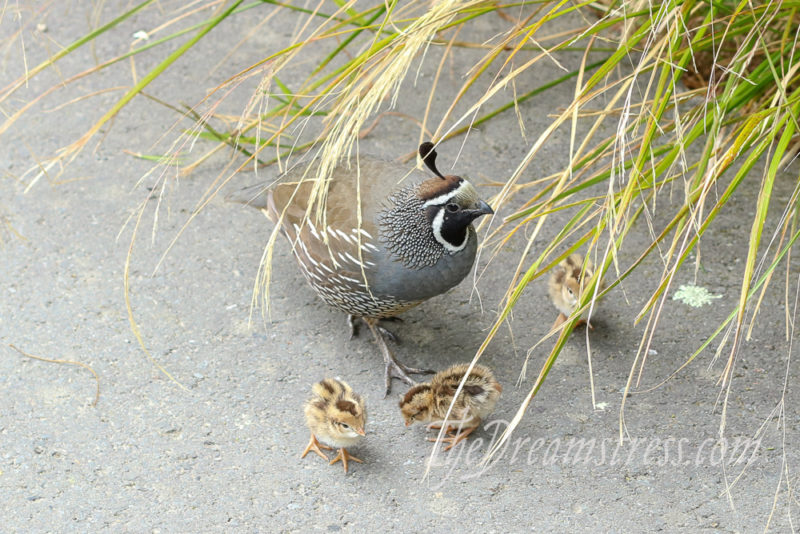
Okay, but what about those dino lizards?
Alright, they aren’t actually lizards, or dinosaurs. They are non-lizards that look just like lizards. They are the sole relic of a branch that has been around since the time of dinosaurs. They are…
Tuatara (Sphenodon punctatus)
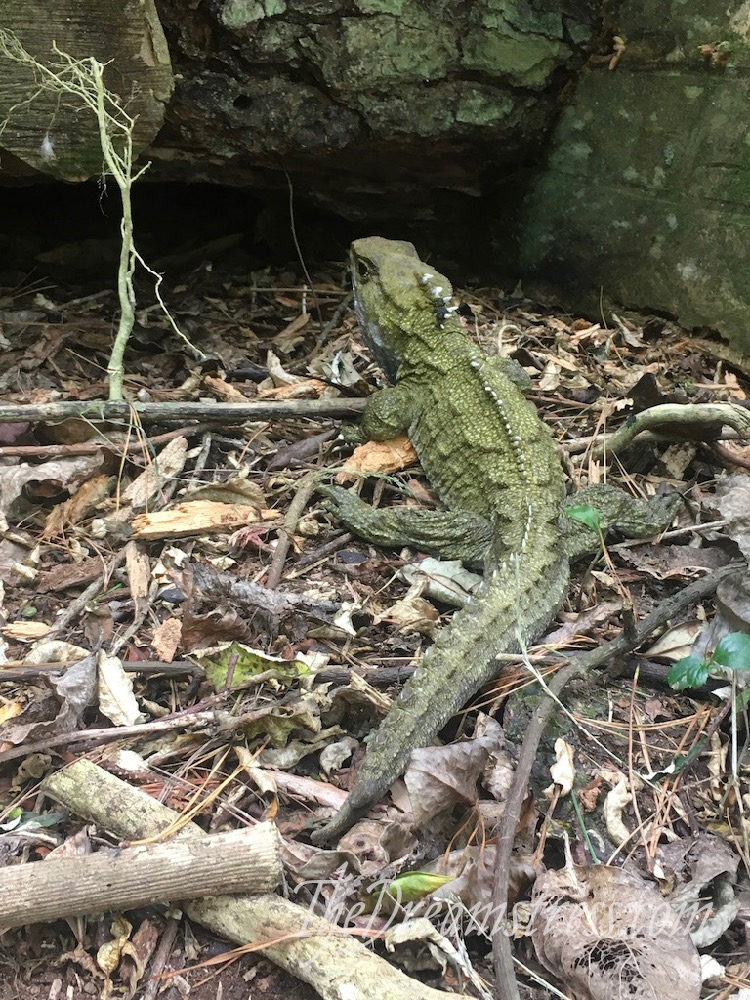
Tuatara can easily live to be 100 – this one is quite mature based on his neck spikes, and is probably older than I am.
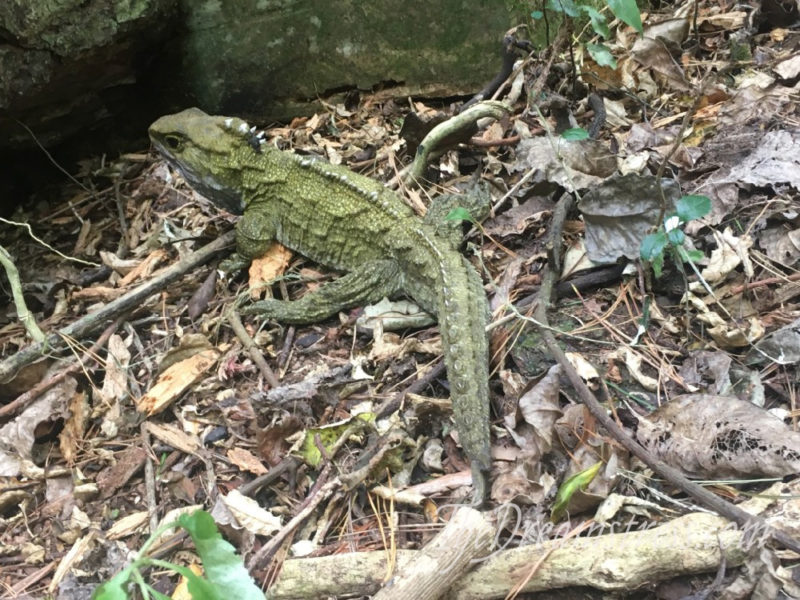
We keep a sort of informal tick-list of things to see at Zealandia – the first kÄkÄriki, the first baby in a nest, we went on a night walk and saw our first kiwi (one came to within FOUR INCHES of my foot), etc. This is our first tuatara not in the extra-protected tuatara area that is set up to make it relatively easy to see them.
Tuatara are absolutely amazing, and totally unique to New Zealand.
So if I’m visiting Wellington, I should go to Zealandia?
Yes, yes you should!
I’ve heard that the guided tours are great if you’re a new visitor, because they really help you to spot birds, and give you lots of information.
Even without the kiwi we saw on the night tour I would have thought it was money well spent. Quite special and beautiful, especially once the glowworms came out. Like walking through a fairy forest at night.
If you had the time, I’d do the guided tour one afternoon, and then come back the next day (admission is for 2 days) and do one of the longer walks – Round the Lakes or Tui Glen are gorgeous.
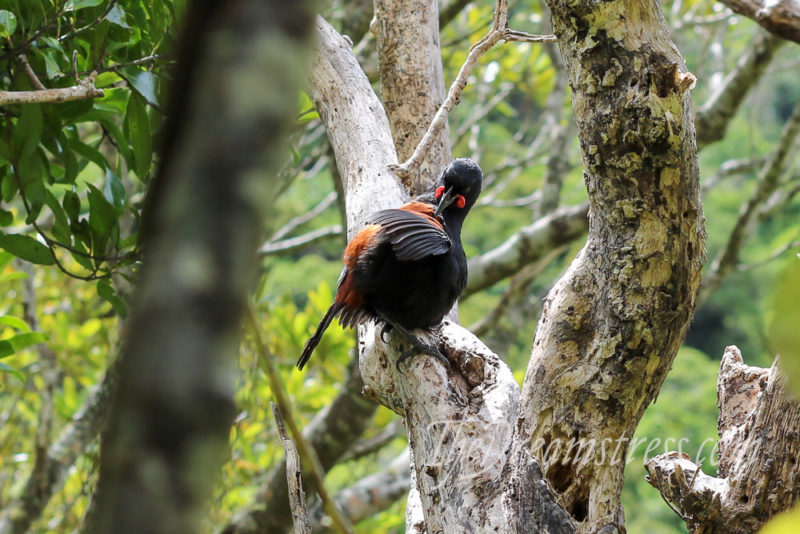

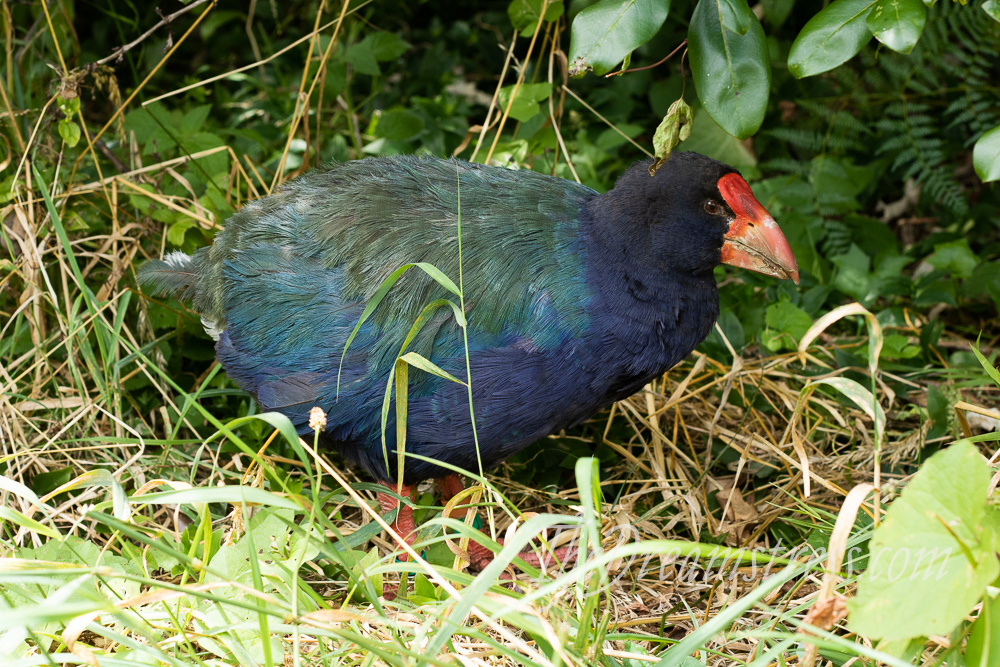
Thanks for sharing; really enjoyed the tour!
This is a wonderful post. Thank you.
Wonderful! Thanks for sharing your birdlife with us.
Wow, I had no idea how many fabulous birds New Zealand is home to!
I agree, though, the baby quail are the cutest. To bad the native kind went extinct.
What a wonderful place! Just to show people not in NZ how precious it is, I live in a city, a nice one, with gardens, but in my life, including some bush walks when I was younger, I have never seen a kiwi, a saddleback, a hi-hi, the kakariki, the robins and several of the others in my life-time. Zealandia is such a treasure.
What a delightful walk-along through Zealandia! It was joyful and I loved seeing the shades of green in leaf and twig as much as meeting the birds and the Tuatara.
Even went and looked up the bellbird. Such beautiful voices.
Very best,
Natalie
What a wonderful introduction and explanation of New Zealand’s amazing birdies!
I wanted to add – in addition to hÄ«hÄ«/stitchbird having a sewing name, the word in te reo mÄori for sewing is tui/tuitui, making opportunities for more sewing puns (with the very select group of people who both speak te reo and sew!)
Hahahahahahaha! I actually laughed out loud, as I have a weakness for cross-linguistic puns. A small special group–you are so lucky to get to be in English/te reo mÄori.
Sincere question: is “te reo mÄori ” always written with lower-case letters? Is it culturally correct to only use lower case?
Wow! Thank you so much for sharing!
Sounds like a lovely respite from city sounds. The quail babies are so cute! I used to see quail at home as a kid, but I haven’t seen them in years. I like that they start with a Q!
Best,
Quinn
Eee, love it so much! Some of the zoos/parks we went to when I was younger and we could afford to travel had “bird forest” areas that were always full of fluttering and chattering, but on a much smaller scale! And I knew what you were heading for as soon as you said “dino-lizard” (because *every* time I see an article about them, that’s how they’re referred to despite the whole “not actually either” thing), so that was a particular treat for my ancient-science nerd self!
Sorry to come late to the game; I wanted to have space to read it. And what a wonderful post. Living in Hawaii felt like a wonderful dream in terms of beautiful and new-to-be birds. But THIS! This is so so neat. Wow, so many different sort of crazy-looking birds! Fun-crazy, of course.
“Quail” in Spanish is my nickname for the kiddo, since she is always running, and always running with her head tilted just like a quail. They are my favorite birds, and seeing them give me very many happy memories in Arizona at Saguaro National Monument. I love their song, I love their running, and I love their little babies!
And while no bird will replace the quail (especially since my child is part quail), so many of these birds make a good case for new favorite.
What beautiful birds, it’s good they are safe from non native predators. Much as l love cats, it’s good they are kept away to allow such lovely creatures to flourish. The stitcher bird sounds great, maybe it could become a symbol for all us sewists?
What you show as Starling is actually a female Blackbird. Love your pictures.